Make creamy Homemade Mayonnaise in ONE minute using just 5 ingredients that you already have in your kitchen. Homemade mayo tastes much better than store-bought, it’s super creamy, fresh, and easy to make.
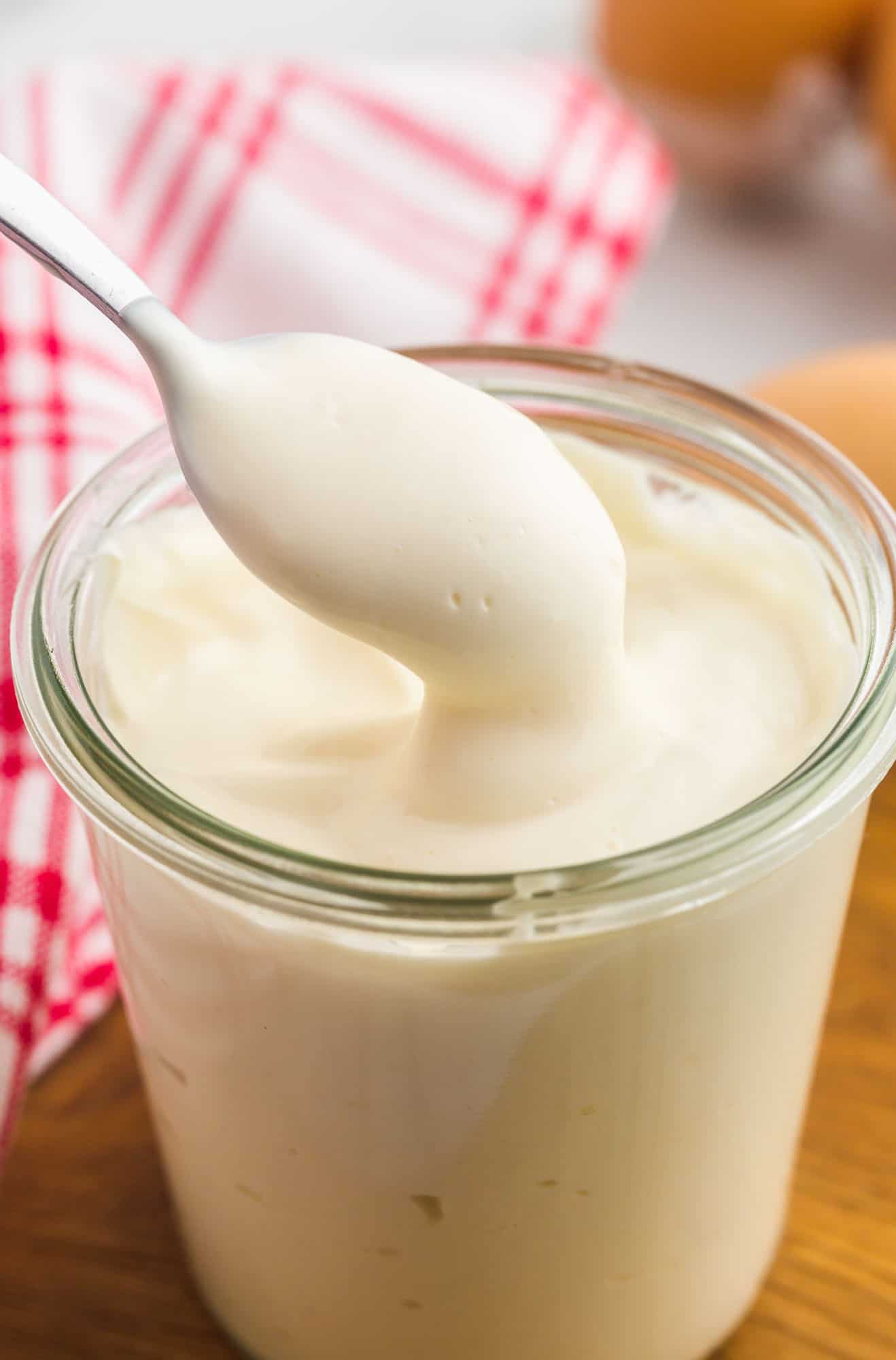
Making your own mayo is super simple to do! So here’s the story, I had a BLT sandwich planned for lunch, I started prepping and then I realized that I was out of mayo. It’s one of these condiments that I always buy from the store without thinking about it.
Instead of running to the store, I decided to make my own mayo (I’ve made it in the past and know that it’s easy to do). So I got my immersion blender out, and made this super creamy and irresistible mayo in a minute. You know the kind of mayo you keep taste testing as you make a sandwich 😅
This also made me realize that homemade mayonnaise tastes MUCH better than store-bought! It’s fresh, doesn’t contain any unnecessary ingredients like sugar or preservatives, and it’s just so easy to make. Use in sandwiches, salad dressings, dipping sauces, and more!
Make a homemade chicken salad with homemade mayo if you want to really enjoy this scratch-made sauce!
I also have a vegan mayo recipe that uses gram flour instead of egg in case you need one!
Why You will love this recipe
- Failproof – My recipe uses a whole egg not just the yolk, which makes it failproof and super easy. You don’t have to worry about separating the egg, or finding ways to use up the egg white.
- Simple Ingredients – I bet that you already have all of the ingredients in your kitchen.
- Add Flavor – It’s so easy to add flavor to your mayo, make aioli, chipotle mayo, pesto mayo, yum yum sauce, fry sauce, Russian dressing, you name it!
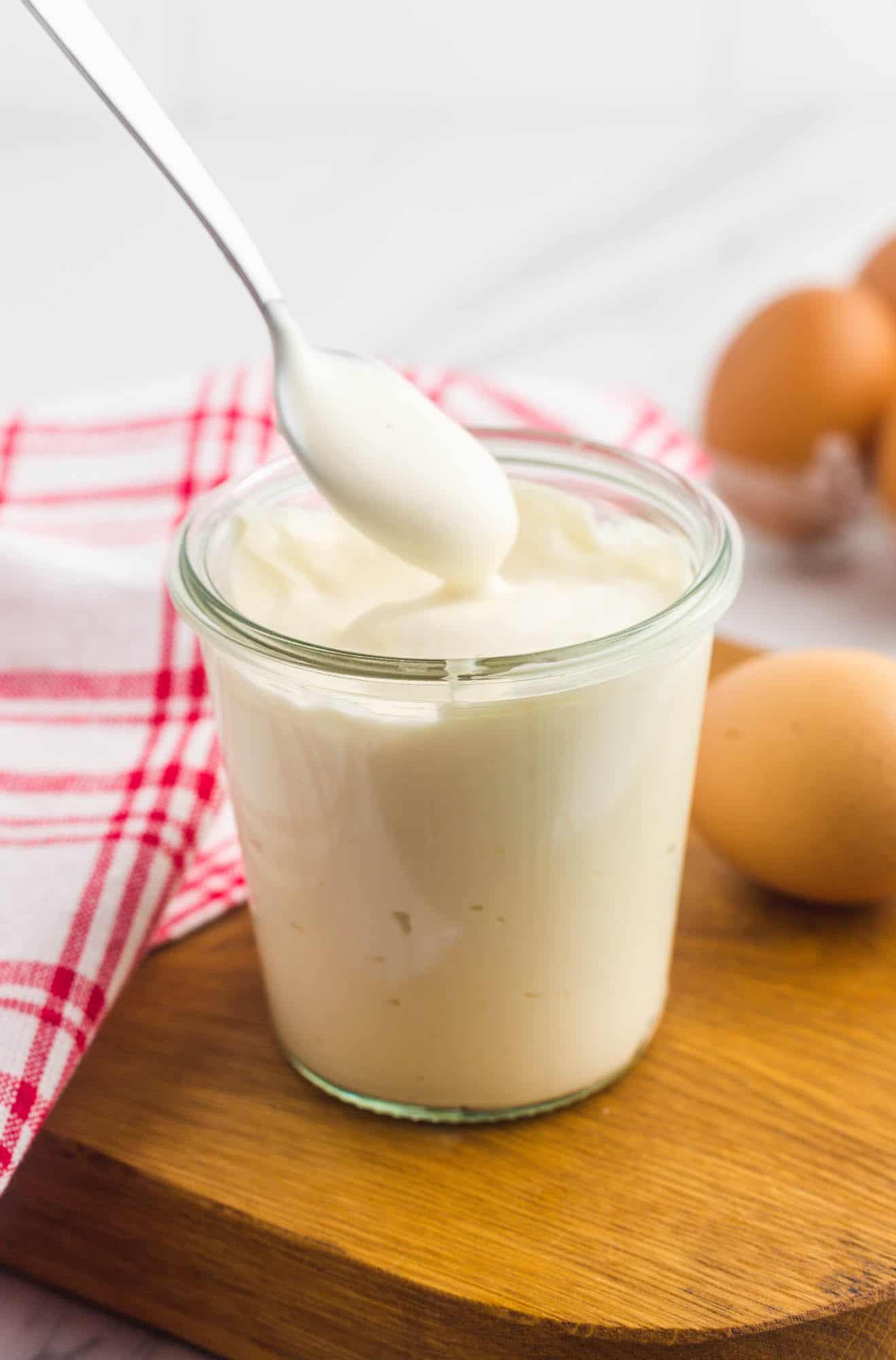
Mayonnaise Ingredients
Here’s what you need to make delicious homemade mayo:
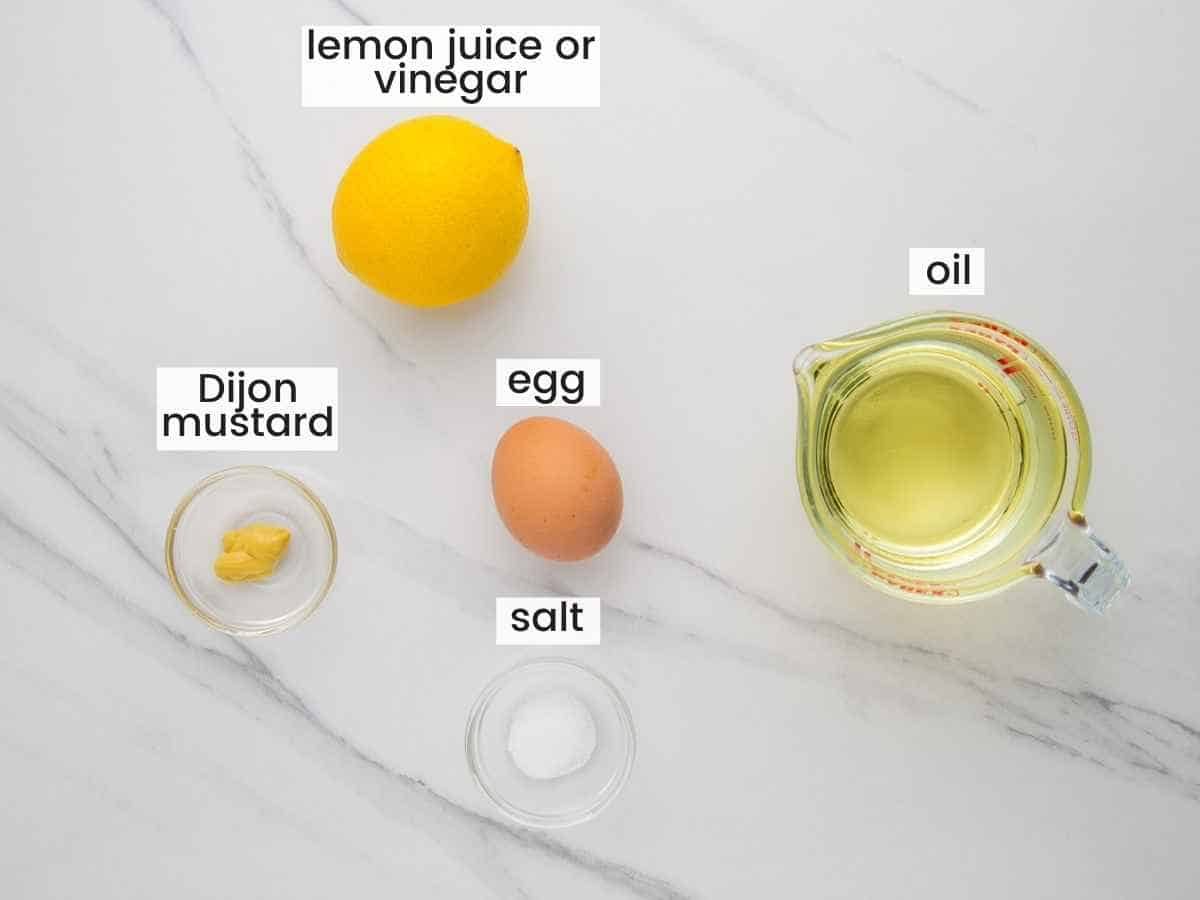
Complete list of ingredients and amounts can be found in the recipe card below.
- Egg – You need one large and fresh raw egg at room temperature (70-80°F). The egg is a very important ingredient in mayonnaise, and I’m personally not concerned about using raw eggs in recipes. But if you’re nervous about using a raw egg you can either use pasturized eggs or try and heat up the egg without cooking it. You will need to heat up the egg to 140°F/60°C.
- Mustard – This ingredient might be a surprise to you, but mustard is such an important ingredient in making mayonnaise for 2 reasons. First, it adds a delicious flavor and “seasons” your mayo. It also helps emulsify and stabilize your mayonnaise, without the mustard you are risking your mayo breaking. I like to use Dijon mustard, but if you don’t have it then yellow mustard is an acceptable substitute.
- Oil – Use neutral flavored oil that is refined such as sunflower, grapeseed, safflower, avocado, rice bran, or canola oil. You can also use light olive oil that is not bitter, but avoid using extra virgin olive oil as it’s too strong in flavor and can be overpowering.
- Acid – You can use fresh lemon juice or white wine vinegar or both! These are added mainly for flavor, but also help stabilize the mayonnaise. Using just vinegar will make your mayo taste more like store-bought, and will increase its shelf life.
- Salt – To season the mayo! Mayonnaise is a cold sauce so it should be well seasoned for the flavors to shine.
Optional Ingredients
You can add other ingredients for flavor such as garlic clove, and freshly ground black pepper. You can also add a little bit of sugar if you want a flavor that’s close to the store-bought stuff.
How To Make Mayonnaise
The key to making a stable homemade mayo is the equipment. While some recipes use a food processor or a bowl and a whisk, it does require some technique. So to make things easier, I like to use a stick blender (immersion blender) and my mayo turns out perfect every single time!
Here’s how you make homemade mayo in just 2 steps:
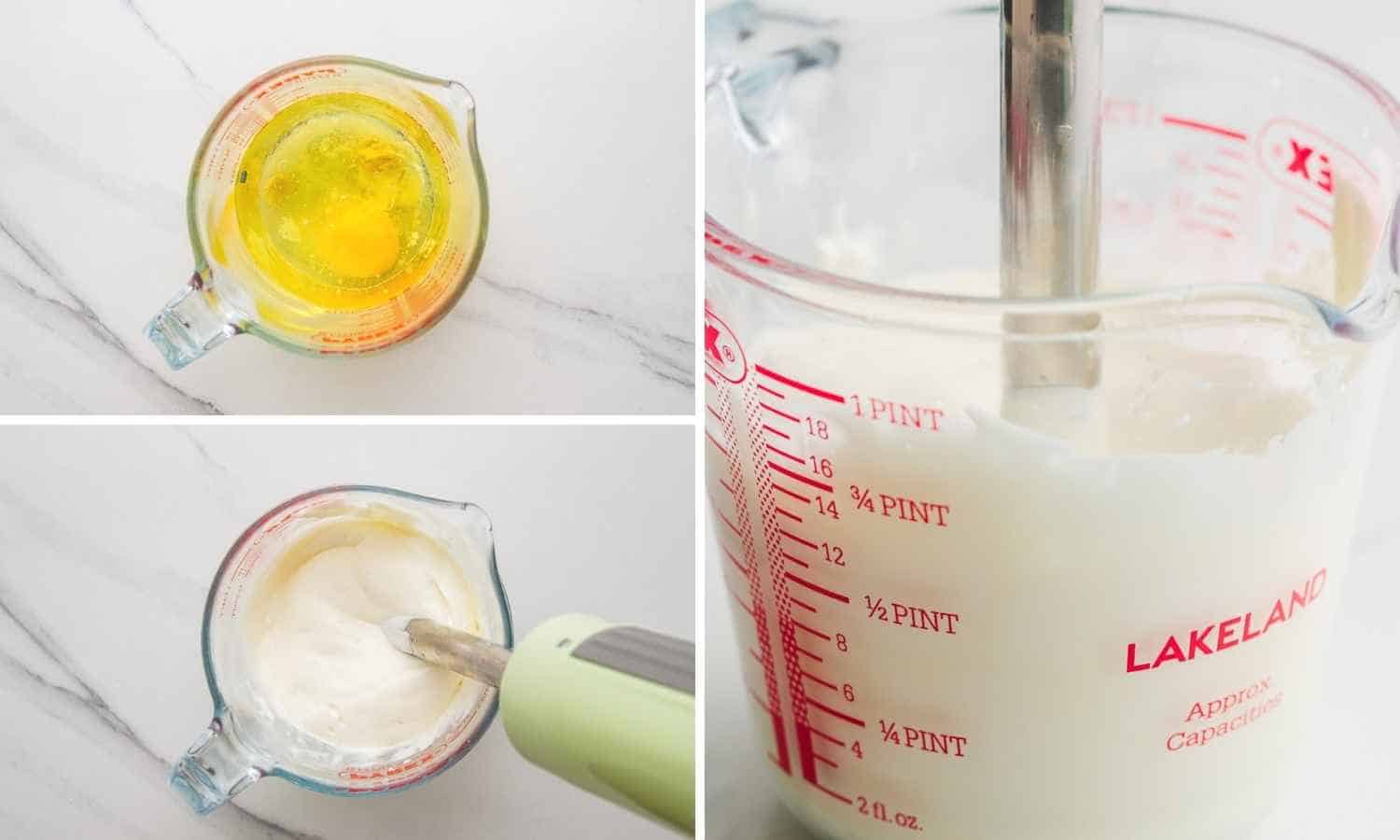
- Add Ingredients. Use a small jug (shown in pictures above), or if your immersion blender comes with a jar then use that. Add all of the ingredients, and wait for 30 seconds for everything to settle and the oil to float to the top (you need the egg and mustard to be at the bottom underneath the blender).
- Place the Stick Blender and Blend! Place the stick blender in the jug so it covers the egg yolk and touches the bottom, and run it for 15-20 seconds without moving it. Once you start seeing an emulsion, you can start moving it up and down until everything is incorporated. Remove the blender, stir the mayo and that’s it!
Tip!
To make garlic mayonnaise, pound 5-6 cloves of garlic into a paste with ½ teaspoon of salt then add that to the mayonnaise. Do not add mustard to your mayo.
Success tips
- Room Temperature Ingredients. Make sure that all of your ingredients are at room temp. If they’re too cold or warm, the mayonnaise might break or not come together at all.
- Use the Right Jar. Avoid using a bowl that is too wide, you need a jar that’s almost the same width as your stick blender so it’s all tight and emulsifies easily.
- Adjust the Consistency. If your mayonnaise is too thick, or you just like it thinner, you can add about a tablespoon or two of water and blend again.
- Taste the Mayonnaise. Always taste the mayonnaise after you’re done, you might need to tweak the flavors a little like adding more lemon/vinegar or salt.
How to Fix Broken Mayonnaise
Things might go wrong, and your mayo might not emulsify and you’ll end up with a curdled mixture that you don’t know what to do with. But don’t worry, there are a couple of simple fixes that you can try:
- Add an Extra Egg Yolk. You can add an extra egg yolk to the mixture, and then blend everything again. This will reemulsify everything together, and thicken your mayo.
- Hot Water. Add a teaspoon of boiling water and quickly blend again.
- Vinegar. Add a teaspoon of vinegar and blend again.
- Add More Mustard. Add a teaspoon of mustard, and blend again.
FAQs
If your mayo is too thick, just stir in 1-2 tablespoons of warm water and this should solve the problem.
About a week in the fridge when stored in an airtight container. If you use super a fresh egg, it might last a little longer. It all depends on the freshness of the egg used.
While you can make mayo using olive oil, the taste of the oil might be too strong. If you chose to use olive oil instead, pick a light one and avoid extra virgin olive oil.
No, this recipe is designed to use an immersion blender. Using a stand mixer will not work.
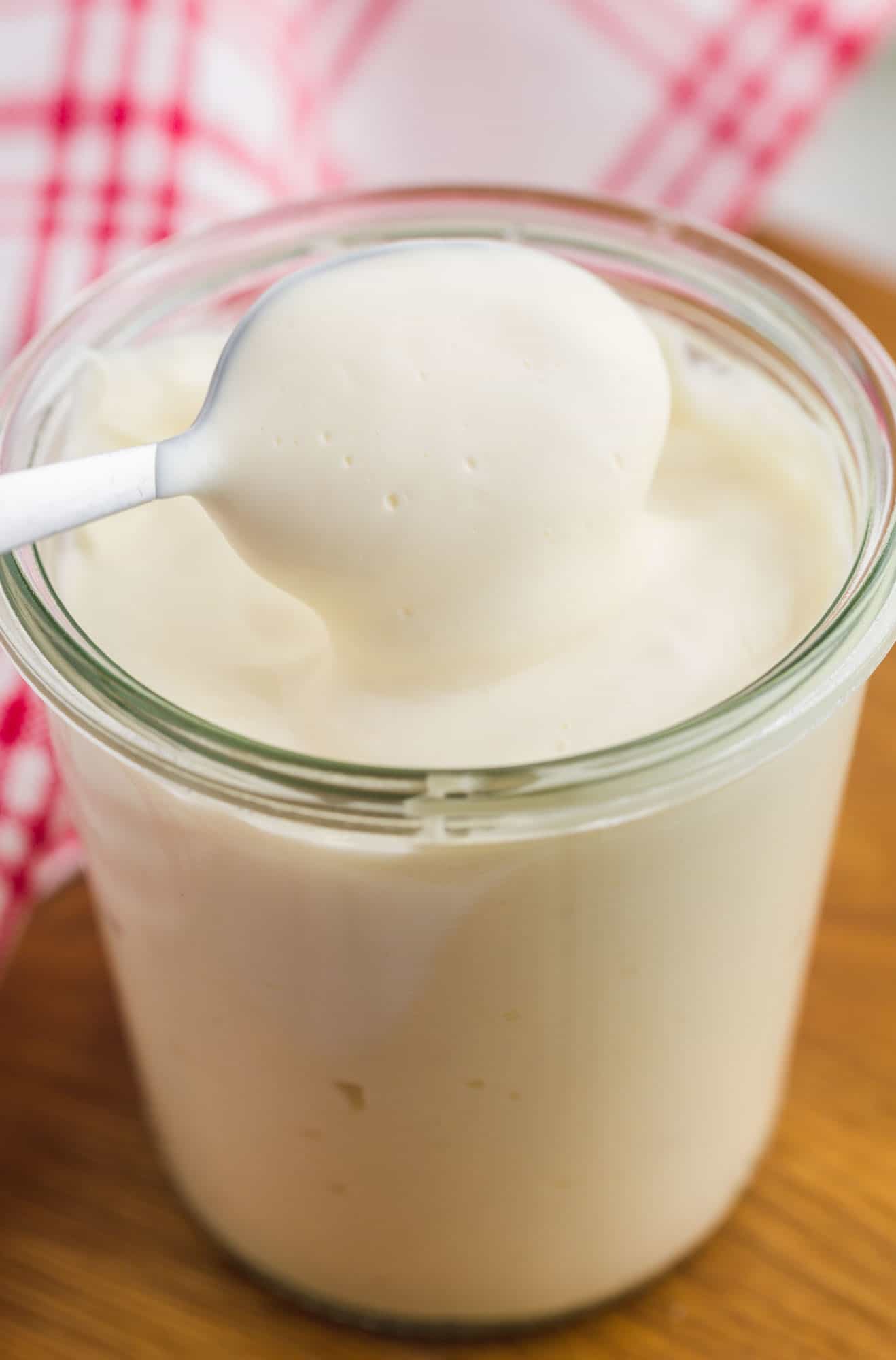
Storing Tips
Homemade mayonnaise must be stored in a sealed container in the fridge for up to one week (if it lasts that long!). I don’t recommend freezing it, the emulsion will break if frozen.
If you’re wondering what is that jar that I’m used in my images, these are Weck Jars and they’re my favorite for storing sauces, fridge pickles, nuts, and more.
Save this recipe for the next time you need to quickly whip up homemade mayonnaise, or Pin it for more people to enjoy too!
Did you make this? Be sure to leave a review below and tag me on Facebook, Instagram, or Pinterest!
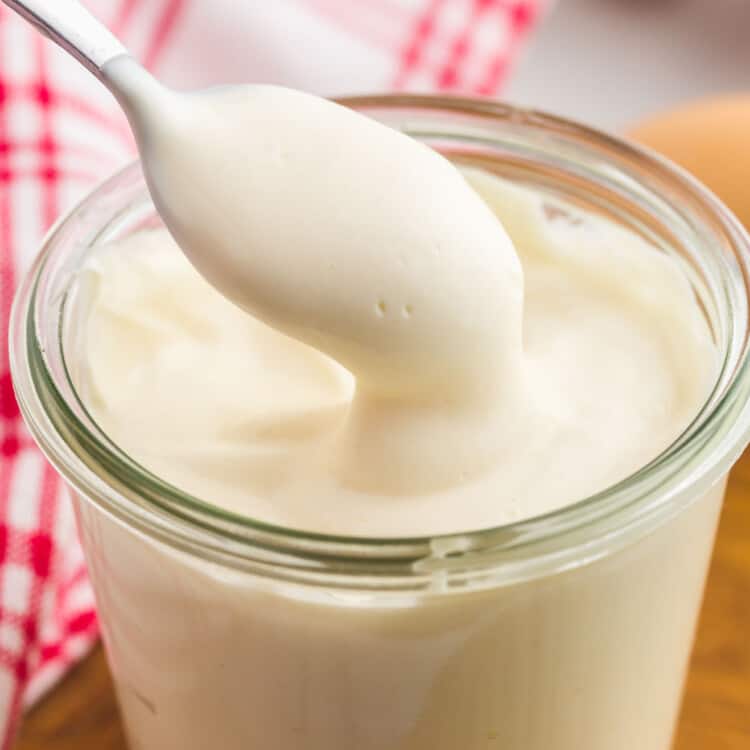
Homemade Mayonnaise
Recipe Video
Equipment
- Immersion (stick) blender
Ingredients
- 1 large egg fresh, at room temperature
- 1 tablespoon lemon juice or white wine vinegar
- 1 teaspoon Dijon mustard
- ½ teaspoon salt
- 1 cup (240ml) neutral-tasting refined oil such as sunflower, grapeseed, safflower, canola, rice bran, or avocado oil
Optional Ingredients:
- 1 clove garlic
- ¼ teaspoon ground black pepper
- ½ teaspoon granulated sugar
Instructions
- Use a small jug or if your immersion blender comes with a jar then use that. Add all of the ingredients, and wait for 30 seconds for everything to settle and the oil to float to the top (you need the egg and mustard to be at the bottom underneath the blender).
- Place the stick blender in the jug so it covers the egg yolk and touches the bottom, and run it for 15-20 seconds without moving it. Once you start seeing an emulsion, you can start moving it up and down until everything is incorporated. Remove the blender, stir the mayo and that’s it!
Notes:
- Yield: This recipe makes around a 12-ounce jar of mayonnaise.
- Room Temperature Ingredients. Make sure that all of your ingredients are at room temp. If they’re too cold or warm, the mayonnaise might break or not come together at all.
- Use the Right Jar. Avoid using a bowl that is too wide, you need a jar that’s almost the same width as your stick blender so it’s all tight and emulsifies easily.
- Adjust the Consistency. If your mayonnaise is too thick, or you just like it thinner, you can add about a tablespoon or two of water and blend again.
- Taste the Mayonnaise. Always taste the mayonnaise after you’re done, you might need to tweak the flavors a little like adding more lemon/vinegar or salt.
- To make garlic mayonnaise, pound 5-6 cloves of garlic into a paste with ½ teaspoon of salt then add that to the mayonnaise. Do not add mustard to your mayo.
- If your mayo is too thick, just stir in 1-2 tablespoons of warm water and this should solve the problem.
- Storing: Store the homemade mayo for about a week in the fridge in an airtight container. If you use super a fresh egg, it might last a little longer. It all depends on the freshness of the egg used. I don’t recommend freezing it.
Nutrition Information
This website provides approximate nutrition information for convenience and as a courtesy only. Nutrition data is gathered primarily from the USDA Food Composition Database, whenever available, or otherwise other online calculators.
© Little Sunny Kitchen
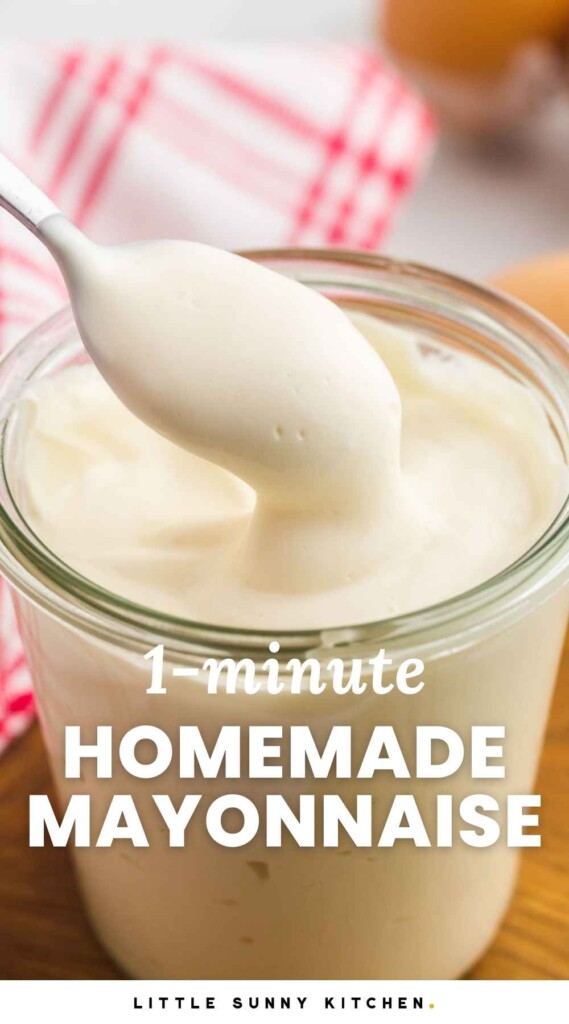
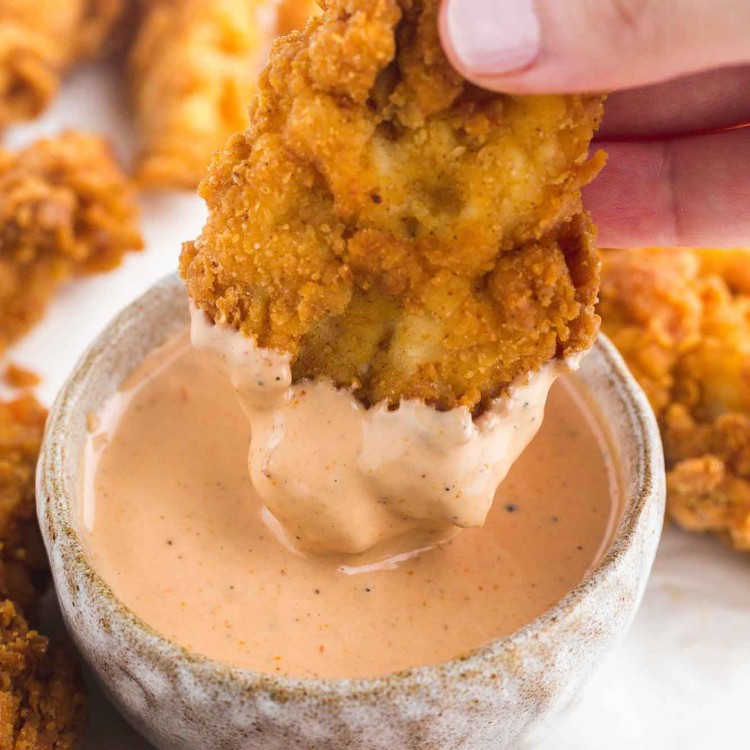
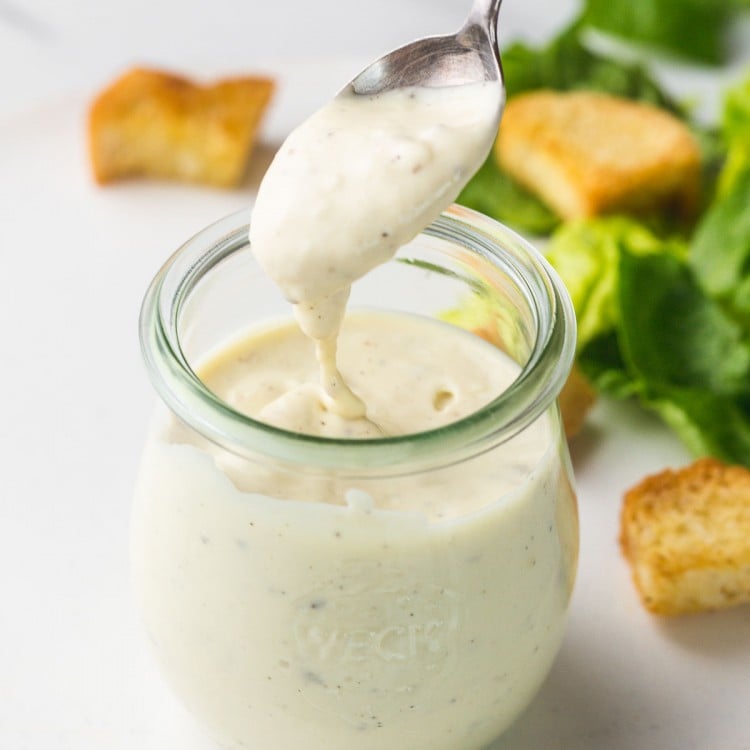
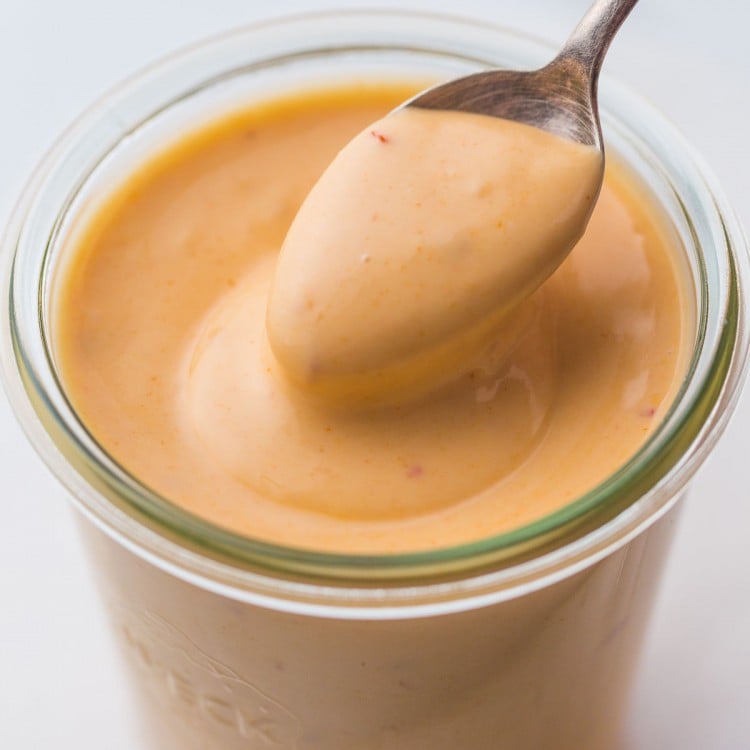
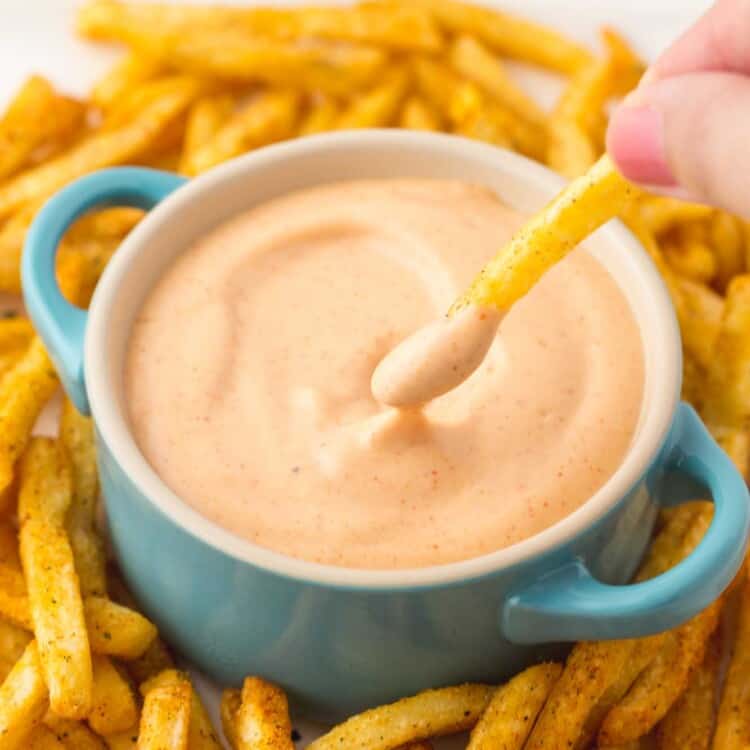
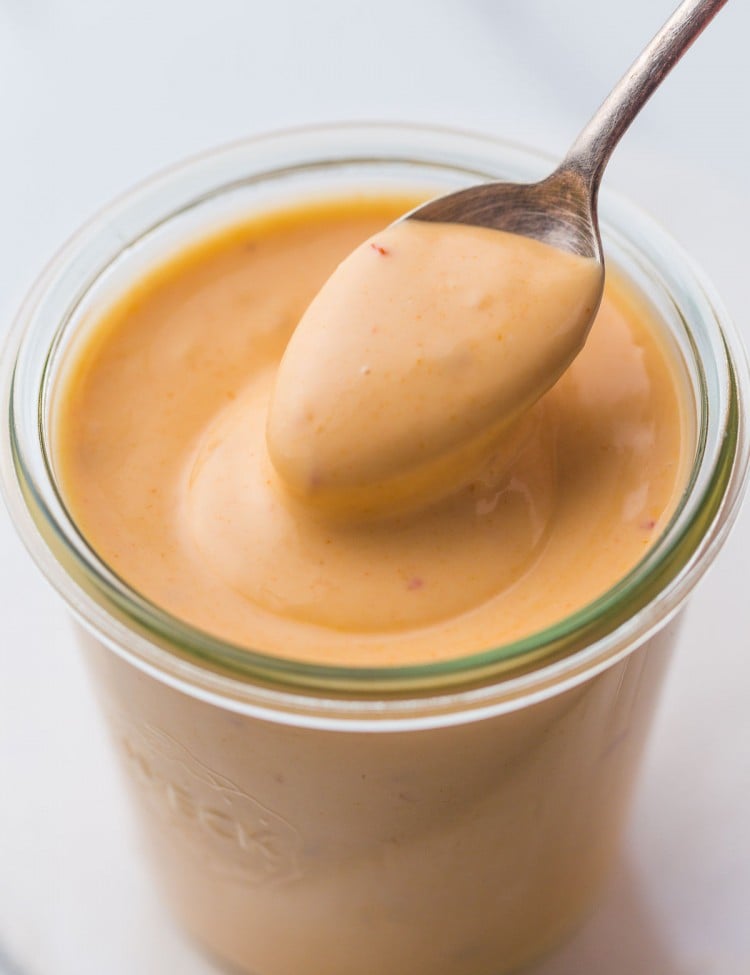
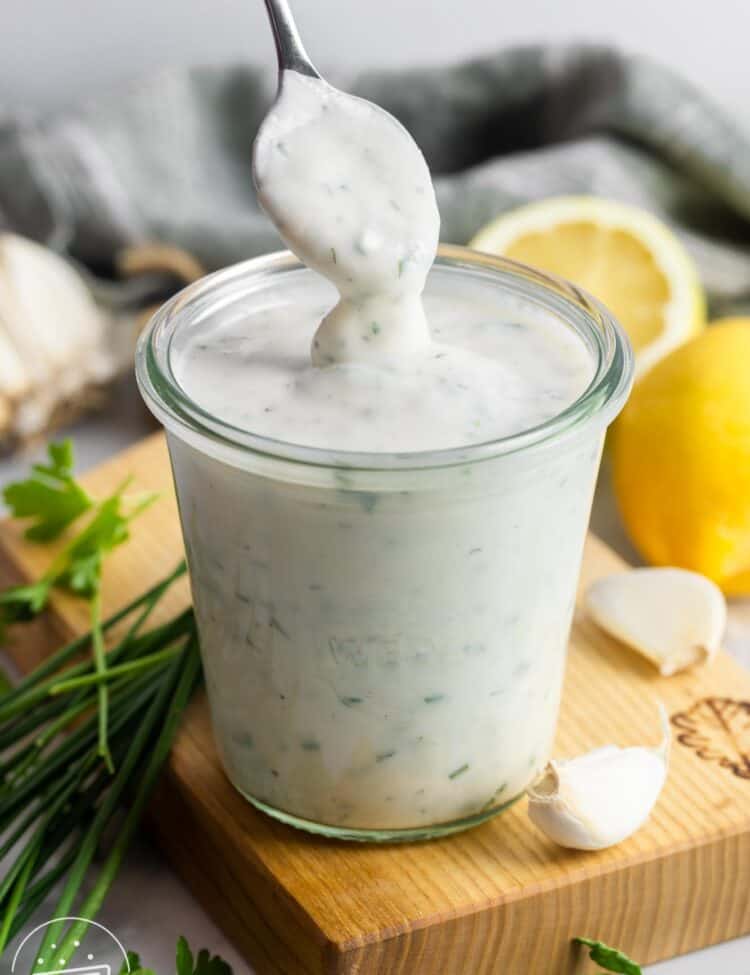
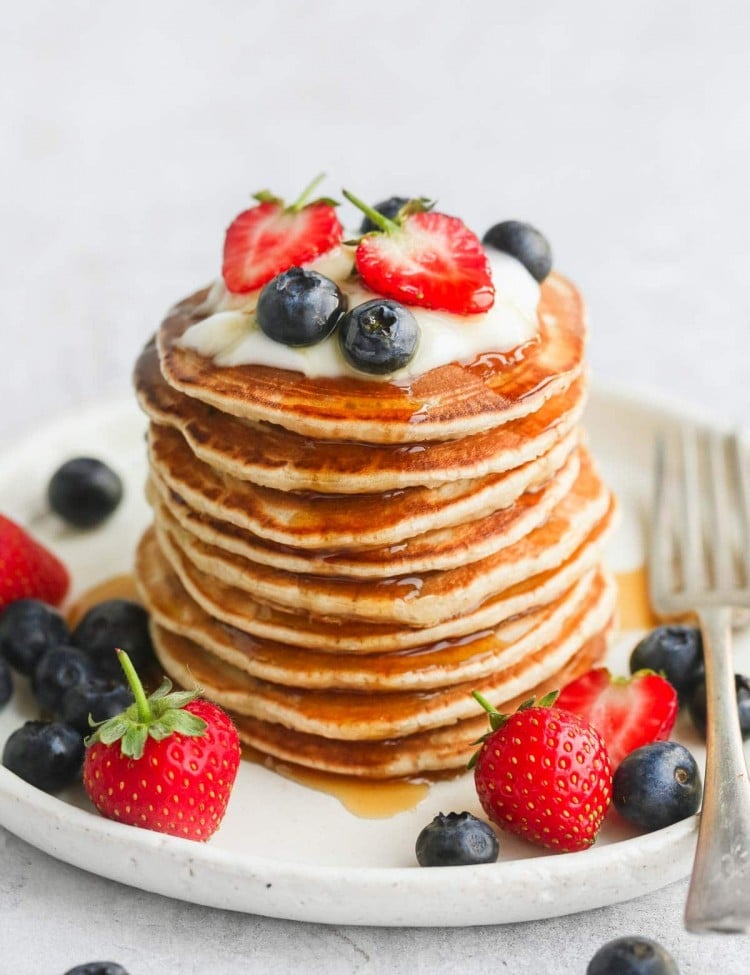
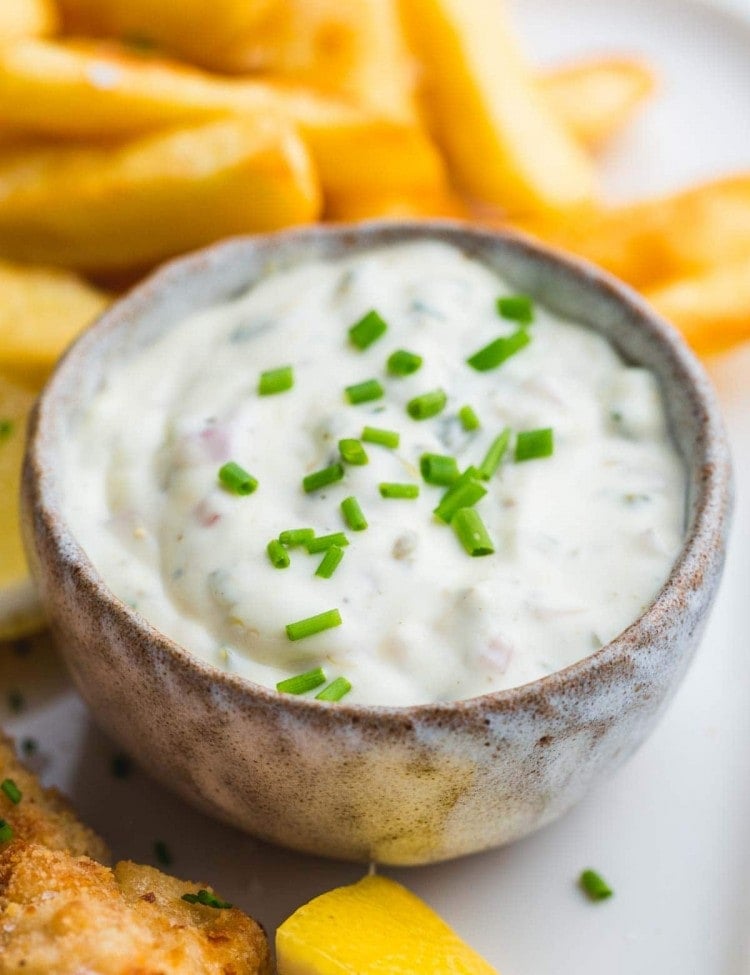


Christy says
Amazing! Can’t believe how fast and easy this was, and tastes just like the store bought!
Little Sunny Kitchen says
Thank you for trying my recipe, Christy! I’m glad you enjoyed making and eating it!
Nathan says
What salt did you use in this recipe? Just want to know so I’m not oversalting.
Diana says
Hi Nathan, I used table salt but you can add less and have a taste and then decide whether you want to add the whole ½ teaspoon of salt. Enjoy!
Joette says
This is so delicious and easy! Thank you!
Vickie says
Easy peasy.
Used extra virgin olive oil. It was all we had. Amped up crushed black pepper to counteract the taste.
Will make again with another oil.